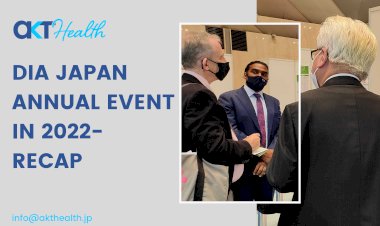Can Supply chain process of Healthcare be possible by Blockchain?
Blockchain ledgering feature helps supply chains in which sequential transactions move trackable physical assets by a system represent one way in which pharmaceutical manufactures, packagers, distributors, wholesalers, dispensers and regulators could more seamlessly exchange information

Blockchain ledgering feature helps supply chains in which sequential transactions move trackable physical assets by a system represent one way in which pharmaceutical manufactures, packagers, distributors, wholesalers, dispensers and regulators could more seamlessly exchange information.
By taking advantage of Blockchain innovation each supply chain organization would control one or a few hubs. Each time an organization went into a transaction with another organization in the supply chain that exchange would be recorded and approved on the blockchain. This would streamline the transfer of information and enable product beneficiaries to validate their provenance with more noteworthy assurance. It would likewise essentially streamline exchange compromises and information moves
The FDA is actualizing the Drug Supply Chain Security Act of 2013 (DSCSA), which characterized a framework for distinguishing medicines and committed on defining a system to empower “track and follow” capacities
The law requires every pharmaceutical bundle (otherwise called a marketable unit) to be labelled with recognizable sequential numbers, and producers must impart those numbers to merchants. They, thusly, share similar information with drug stores.
Sharing unique ID numbers for each bundle implies the bundle can be followed as it travels through the supply chain. It additionally can be followed back to its beginning point if there should arise an occurrence of worries about authenticity or quality. One day pharmacists may utilize these unique identifiers to confirm items and guarantee that the medicines they apportion to patients are legitimate. Patients could be a definitive recipient. PwC gauges that $163 billion to $217 billion in fake medications were sold worldwide in 2015
Pharmaceutical supply chain: Track and trace with blockchain:
1. Coded pallets — Including saleable pharmaceutical units right with singular, calibrated identifiers — are scanned as they are transferred to the 3rd Party Logistics (3PL) for shipment, and transaction data is uploaded to the blockchain
2. The 3PL brings the pallets of pharmaceutical units to the wholesaler/distributor, who scans the pallet to verify transaction data and validate the transaction in the blockchain
3. The wholesaler/distributor breaks down the pallets to fulfil an order by the dispenser and transmit transaction data to the blockchain
4. The dispenser scans the case and uses transaction history on the blockchain to authenticate products
5. The dispenser provides the medication to the patient
In extension to smoothening the development of physical item, a blockchain-empowered stage could extraordinarily rearrange how items are paid for and repaid as a component of the contract administration procedure utilized by group Purchasing Organizations (GPOs), makers and merchants.
The obligation administration procedure is extensively intricate. An agreement between a drug producer and a GPO includes numerous means, including arbitration, questions, chargebacks and discount instalments. Each structure, for example, the Electronic Data Interchange (EDI) 844 item transfer account adjustment form, requires many information components from each gathering.
A fundamental problem of the present system is confirming that every litigant concurrently has updated data detailing costing and agreements. A trader buying a medicine is not acknowledged if that item is going to an independent pharmacy, retail chain or health system. All such parties can have variety costing and agreement terms, heading to chargebacks and agreements variances.
End-to-End the agreement, the agreement administration process can include a several back-end forth procedures between a producer and wholesaler and take more than couple of months.
A blockchain-based framework could significantly shrivel this procedure to one to two days with brilliant contract design. Smart contracts code business forms on a blockchain and trigger programmed activities because of certain different activities. For instance, approving the closeout of a particular portion of a medicinal item to a particular merchant, for example, an emergency clinic — could trigger a particular deal value that recently was set by the agreement. Supplementary to decreasing how much time the procedure takes, this framework could to a great extent mechanize that procedure.
Group purchasing organization (GPO) contract administration with blockchain
1. Drug manufacturers and GPOs create and authorize a smart contract on the blockchain that contains membership and pricing information
2. Wholesalers with GPO membership are given required authentication to retrieve the smart contract and transact using negotiated rates
3. Dispensers purchase product from the wholesaler at the contract price
4. Wholesalers pre-validate the sale using the smart contract to authorize the purchase
5. Wholesalers report and record the sale on the smart contract
6. Product is shipped to the dispenser
Provider and payer credentialing
A blockchain-empowered framework would allow information significant to the supplier and payer credentialing procedure to be shared and refreshed continuously. Procedures that take weeks or months could be practiced in days.
A clinician who joins an office, doctor system or emergency clinic should initially have his or her accreditations — instructive history, licensures, administrative history and then some — affirmed, which could require reaching in excess of several elements and take months. Postponements can prompt noteworthy income misfortunes.
The clinician additionally should be taken on a payer’s system to acknowledge protection instalments, which likewise takes months. During these holding up periods, the clinician gains almost no cash for their boss or practice. This isn’t an exceptional event. Doctor turnover rates were around 7 percent in 2016, as per Select International Healthcare. The New England Journal of Medicine has discovered that 25 percent of recently contracted doctors leave inside three years.
Those expenses don’t consider another framework wide weight that blockchain could streamline: Credentialing and registry updates to list areas where a doctor sees patients and whether a doctor is enlisted with a specific guarantor or is taking new patients
This wasteful procedure is expensive to suppliers and payers. The Council for Affordable Quality Healthcare gauges that payers spend more than $2 billion a year keeping up supplier databases, 75 percent of which could be dispensed with by setting up a single source of truth, for example, a blockchain
Every doctor in a training presents a normal of 18 applications for credentialing every year. That requires 80 minutes — including 69 minutes of staff time and 11 of doctor time — per doctor. Payers at that point invest time and money checking these cases. The National Association of Medical Staff Services (NAMSS) gauges that most doctor credentialing takes over 120 days, while health plan enlistment takes 60 to 180 days. For the reasons for HRI’s investigation, we have received traditionalist appraisals
“Envision getting quarterly demands for data from these health intends to affirm that the registry data for every doctor is up-to-date. Some of them send these solicitations by email; others by letter. All of them appears to be unique. These suppliers need to treat patients — they would prefer not to lounge around and round out a similar data again and again.” Blockchain could improve this procedure by enabling one update to arrive at numerous payers.
Patients frequently experience the lack of access to complete, updated data with respect to which doctors are secured by their health plans. NAMSS gauges that 12 to 18 percent of supplier indexes are obsolete or mistakenly list a supplier as taking an interest in an arrangement
Controllers, as well, want precision in supplier catalogs. An ongoing CMS review of Medicare Advantage online supplier catalogs found that 52.2 percent contained mistakes. As indicated by CMS’ 2019 call letter, it will start taking requirement activities against some Medicare Advantage associations that don’t right genuine supplier catalog inadequacies
Payer/Provider credentialing on Blockchain
1. Provider/health professional uploads background information (i.e. educational history, certifications, licenses, malpractice insurance, etc.) to the blockchain
2. Primary sources authenticate provider background information in the blockchain
3. Health facilities verify provider data on the blockchain using primary source verification, and accept or reject the provider, uploading the result to the blockchain
4. If accepted, the enrolment application is submitted to the payers
5. Payers verify data via the blockchain using primary source verification and either accepts or rejects the application, uploading the result to the blockchain
6. Patient verifies that the provider is in-network and has necessary credentials using blockchain
7. Government regulators periodically audit provider credentialing processes
Conclusion
Those above steps offer healthcare companies an opportunity to consider the short- and long-term disruptive potential of blockchain before it disrupts them first.
Blockchain will be disruptive, but that disruption in healthcare won’t affect all companies equally. Companies should determine how blockchain might affect their operations and those of their partners. The greatest impacts are likely to be felt by intermediaries, including those who check, transfer, process or hold data for other healthcare companies. Blockchain has the potential to develop from a fringe technology into a major protocol for healthcare ecosystem players to record and communicate transactional information.
In some sectors, disruption of the status quo is already underway, and companies have just a few years before full-scale blockchain implementations begin to appear on the market. Though a first-mover advantage isn’t as big of a consideration, since an ecosystem-level approach is needed to implement blockchain, first movers will be able to set the standards by which data will be transferred, shared and checked, and will be better suited to move quickly to recognize efficiencies when that ecosystem is established.

 Meghana
Meghana 


































